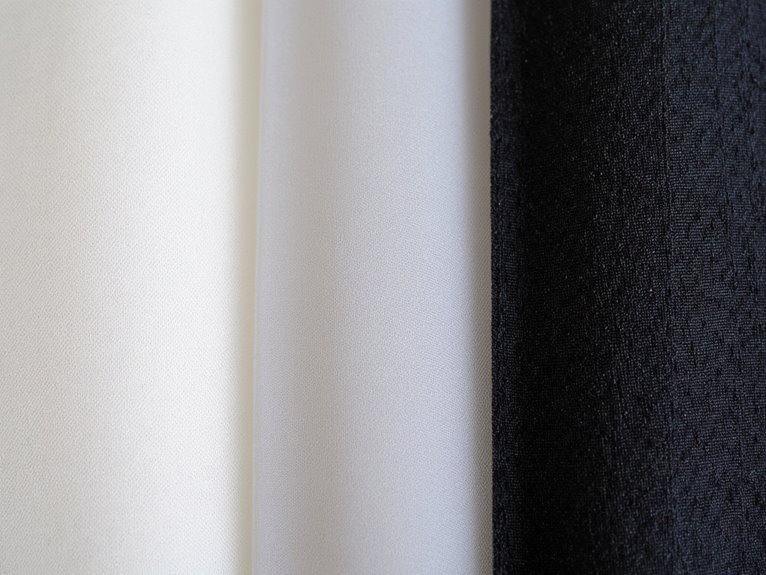Understanding GSM and Weight Categories in Base Layers
GSM (grams per square meter) determines your base layer’s weight and performance characteristics. Lightweight options (140-170 GSM) excel above 60°F for high-output activities, prioritizing moisture-wicking over insulation. Midweight layers (200-300 GSM) balance breathability and warmth for 30-60°F conditions. Heavyweight base layers (300+ GSM) maximize insulation below 30°F during low-activity scenarios. Lower GSM fabrics move moisture faster but provide less thermal retention, while higher GSM options slow moisture transport but increase heat retention. Understanding these specifications helps you select ideal performance for your specific climate and activity demands.
We are supported by our audience. When you purchase through links on our site, we may earn an affiliate commission, at no extra cost for you. Learn more. Last update on 5th January 2026 / Images from Amazon Product Advertising API.
Notable Insights
- GSM (grams per square meter) indicates fabric weight and directly correlates with thermal efficiency, breathability, and performance characteristics.
- Lightweight base layers (120-170 g/m²) excel in warm conditions above 50°F, prioritizing moisture-wicking for high-intensity activities.
- Midweight layers (150-300 g/m²) balance insulation and breathability, ideal for temperatures between 30°F to 60°F in moderate conditions.
- Heavyweight base layers (300+ g/m²) maximize insulation for extreme cold below 30°F during low-activity scenarios.
- Lower GSM fabrics transport moisture faster but provide less insulation, while higher GSM retains more heat.
What GSM Means for Base Layer Performance
When selecting base layers, GSM serves as your primary indicator of fabric weight and performance characteristics. Higher GSM values typically range from 200-300 grams per square meter for winter base layers, providing enhanced thermal efficiency through increased material density.
This translates to better heat retention and insulation properties.
However, GSM directly impacts fabric flexibility. Base layers exceeding 250 GSM may reduce your range of motion during high-intensity activities.
Lower GSM options between 150-200 offer superior breathability and moisture-wicking capabilities for active pursuits.
The relationship between GSM and performance isn’t linear. Specialized synthetic fibers can deliver comparable warmth at lower weights, while merino wool leverages natural properties to enhance thermal regulation. Merino wool can absorb up to 35% of its weight in moisture before feeling damp to the skin. Nuyarn technology enhances merino fiber benefits, making base layers tougher and longer lasting.
Your activity level and environmental conditions should guide GSM selection for peak performance balance.
Weight Categories and Their Temperature Applications
Base layer weight categories directly correspond to specific temperature ranges and activity levels you’ll encounter outdoors.
Lightweight options around 140-170 g/m² excel in temperatures above 60°F during high-output activities, while midweight layers at 200-300 g/m² handle the 30°F to 60°F range where you need balanced insulation and breathability.
Heavyweight thermal base layers above 300 g/m² target extreme cold below 30°F, providing maximum insulation when you’re stationary or moving slowly in harsh conditions.
Lightweight for Warm Conditions
For high-output activities in mild to warm conditions, lightweight base layers serve as your primary moisture management foundation rather than a source of insulation. These garments excel in temperatures between 50°F and 68°F, where you need active comfort without bulk.
| Feature | Specification | Performance Benefit |
|---|---|---|
| GSM Range | 120-160 g/m² | Ideal breathability-durability balance |
| Temperature Range | 50-68°F (10-20°C) | Prevents overheating during activity |
| Primary Function | Moisture-wicking | Keeps skin dry and cool |
| Fabric Construction | Mesh zones/fine knits | Enhanced ventilation |
| Insulation Level | Minimal lightweight insulation | Maximum mobility retention |
You’ll find these layers ideal for trail running, cycling, and warm-weather hiking. The reduced fabric weight prioritizes breathability over thermal retention, making them perfect when you’re generating significant body heat through exertion. When paired with lightweight hiking shoes under 1.5 pounds per pair, this combination reduces overall fatigue and improves mobility during extended outdoor activities. For activities involving stream crossings or muddy terrains, consider complementing your base layer system with waterproof socks to maintain dry feet and prevent moisture-related discomfort.
Midweight for Variable Temperatures
Midweight base layers occupy the versatile middle ground between lightweight and heavyweight options, delivering balanced performance across changing conditions.
These layers typically weigh 150-200gsm, using heavier merino wool, fleece blends, or synthetic materials designed for insulation and moisture management.
You’ll find midweight versatility shines in temperatures ranging from 30°F to 50°F (-1°C to 10°C). They’re ideal for early fall, late spring, and mild winter activities when heavy outerwear isn’t necessary.
The thicker fabric construction allows superior heat retention without excessive bulk.
Temperature adaptability comes through design features like zippered necks and full-length sleeves. You can modulate ventilation during activity shifts.
These layers work effectively as standalone pieces in moderate cold or as insulating components in multi-layer systems for colder conditions.
Heavyweight for Cold Weather
When extreme cold threatens your comfort and safety, heavyweight base layers become your primary defense against hypothermia and frostbite. These garments exceed 200 gsm fabric weight, with many qualifying models surpassing 220 gsm for maximum insulation.
The heavyweight benefits include thermal efficiency equivalent to adding 7°F to 15°F of warmth to your layering system.
You’ll find these layers essential for sub-zero temperatures, alpine environments, and prolonged winter exposure. Merino wool delivers superior warmth-to-weight ratios, while synthetic options provide enhanced durability and wind resistance.
Brushed interiors and waffle structures trap warm air effectively. Design features include high necks, thumb grips, and half-zip ventilation.
However, increased bulk restricts movement and reduces breathability, making heavyweight layers ideal for low-intensity activities in severe cold.
How GSM Affects Moisture Management and Breathability
When you’re choosing base layers, GSM directly controls how well moisture moves through the fabric and escapes to keep you dry.
Lower GSM fabrics around 150-200 grams per square meter create more open fiber structures that allow sweat to wick faster and air to flow more freely through the material.
However, you’ll need to balance this breathability against warmth requirements, since denser, higher GSM constructions above 300 grams naturally restrict airflow while providing better insulation.
Lower GSM Breathes Better
Lower GSM fabrics excel in warm conditions where rapid moisture removal is critical.
However, their enhanced breathability comes with trade-offs-reduced insulation capacity and limited moisture buffering.
Wind and movement amplify these drying benefits substantially.
Weight Impacts Wicking Speed
The thickness of your base layer directly controls how quickly moisture moves from your skin to the outer surface where it can evaporate.
GSM variations create significant differences in wicking performance across weight categories. Lightweight fabrics between 120-180 GSM transport moisture fastest due to reduced fabric density and increased porosity.
Fabric density affects moisture management through these mechanisms:
- Moisture absorption – Higher GSM retains more water within the fabric structure.
- Wicking characteristics – Thicker layers slow moisture transport from skin to surface.
- Evaporation speed – Lower GSM fabrics dry faster with less material holding water.
- Air exchange – Dense, heavy fabrics limit breathability and vapor release.
Midweight layers (150-220 GSM) balance wicking speed with insulation.
Heavyweight options sacrifice quick moisture transport for thermal retention.
Density Versus Airflow Balance
Fabric density creates a fundamental trade-off between thermal insulation and moisture management performance in base layer design.
Higher GSM fabrics restrict airflow while providing superior warmth retention. You’ll find that 300+ GSM base layers trap heat effectively but considerably limit vapor transport and evaporation rates.
Lower density ratios in lightweight fabrics (100-150 GSM) enable ideal airflow optimization through more open fiber structures. These configurations facilitate rapid moisture transfer and enhanced breathability. Your sweat vapor moves freely through the fabric matrix, preventing saturation and maintaining comfort during high-output activities. Quick-dry technology allows these lighter base layers to dry completely within one hour after exposure to moisture.
Medium-weight options (150-250 GSM) balance these competing demands. They provide moderate insulation without completely compromising airflow.
You must match fabric density to your activity level and environmental conditions for ideal moisture management performance. Similar to hiking footwear where practical mesh ventilation enhances breathability during extended outdoor activities, base layer fabrics require strategic airflow design to prevent moisture buildup and maintain thermal regulation.
Merino Wool GSM Standards Across Activity Levels
When selecting merino wool base layers, GSM ratings directly correlate with activity intensity and environmental conditions to optimize thermal regulation.
Understanding these standards prevents performance issues like overheating during high-output activities or insufficient warmth in cold conditions.
GSM Categories by Activity Level:
- Lightweight (145-190 GSM) – High-activity pursuits requiring maximum breathability and moisture-wicking
- Midweight (200-300 GSM) – Moderate activity levels with variable temperature demands
- Heavyweight (300+ GSM) – Low-activity scenarios in extreme cold requiring maximum insulation
- Year-round versatility (200 GSM) – Balanced compromise for diverse conditions
Merino wool’s natural properties enhance these activity levels through superior temperature regulation.
Lightweight options excel during summer hiking, while heavyweight versions maintain core temperature during stationary winter activities.
Proper GSM selection optimizes comfort and performance.
Reading GSM Labels to Compare Base Layer Options
Although GSM appears as a simple three-digit number on product labels, it’s your most reliable tool for comparing base layer weights across different brands and materials. GSM accuracy enables direct comparison between manufacturers who might use different fiber blends or marketing terms. However, fabric variability means identical GSM values can feel different due to construction methods.
| GSM Range | Weight Category | Best Applications |
|---|---|---|
| 150-200 | Lightweight | High-output activities, warm conditions |
| 200-300 | Medium-weight | Moderate cold, balanced insulation |
| 300+ | Heavy-weight | Cold environments, low activity |
Use GSM as your primary comparison metric, but combine it with material specifications and intended use cases. This approach eliminates confusion from subjective terms like “ultra-light” or “expedition-weight” that vary between brands.
Frequently Asked Questions
Does Higher GSM Always Mean Better Quality in Base Layers?
No, higher GSM doesn’t guarantee better quality in base layers. You’ll find quality depends on fiber type, construction, and durability factors like processing techniques, not just weight alone.
Can GSM Measurements Vary Between Different Manufacturers for Similar Fabrics?
Yes, you’ll find GSM variations between manufacturers for similar fabrics due to manufacturer differences in testing methods, equipment calibration, sample sizes, environmental conditions, and adherence to standards like ASTM D3776.
Are There Industry Standards That Regulate GSM Testing Methods for Base Layers?
Yes, you’ll find ASTM D3776 and ISO 3801 standards regulate GSM testing methods, but standardization challenges exist since these aren’t specific to base layers, creating gsm testing regulations that vary across manufacturers.
On a final note
You’ve learned how GSM directly impacts your base layer’s thermal regulation and moisture management capabilities. Match your activity level with appropriate weight categories: ultralight 100-150 GSM for high-output activities, midweight 150-250 GSM for moderate conditions, and heavyweight 250+ GSM for cold static environments. Don’t overlook fabric composition-merino wool performs differently than synthetics at identical GSM ratings. Calculate total system GSM when layering to optimize your thermal regulation and avoid overheating during variable conditions.

